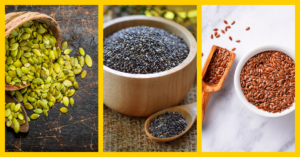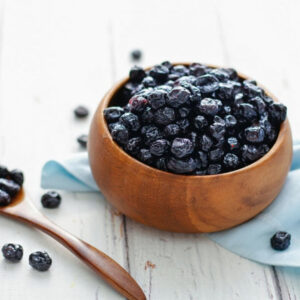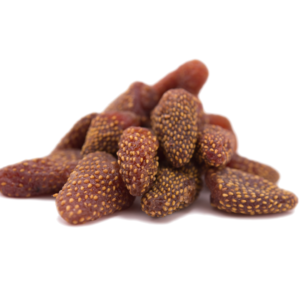
If you’re living with migraine, you probably know that certain foods and drinks can trigger an attack. But even though it’s important to know what to avoid, focusing on the foods to add to your diet matters, too: It may help reduce the number or severity of migraine attacks or other types of headaches.
“Food really is the first medicine,” says Wynne Brown, MD, the medical director of integrative medicine at Wake Forest Baptist Health in Winston-Salem, North Carolina. “When you’re trying to manage migraine, what you eat — and when you eat — can make all the difference,” she says.
Being open to change in your diet is a good start, says Dr. Brown. “Often, we can get in a rut and eat the same things over and over. By adding different fresh fruits and vegetables to our diet, we can reap benefits in terms of water content as well as vitamins and minerals,” she says.
A diet with a variety of good foods will make a big difference both in migraine management and overall health and may improve imbalances that contribute to headaches, says Brown.
If you’re looking for ways to change your diet to better manage your migraine, here are some expert tips on the foods and drinks to help you on your journey.
“Food really is the first medicine,” says Wynne Brown, MD, the medical director of integrative medicine at Wake Forest Baptist Health in Winston-Salem, North Carolina. “When you’re trying to manage migraine, what you eat — and when you eat — can make all the difference,” she says.
Gerbs Banana Chips
Looking for something quick and easy that could help stave off a migraine attack or an episode of hypoglycemia, which could lead to a headache? Reach for a banana or some Gerbs Sweet Banana Chips or Unsweetened Chips rather than highly processed foods like granola bars or candy, suggests Brown.
“Bananas are a great food for quick energy recovery, and they’re high in magnesium, which can be helpful when people have headaches,” she says.
Bananas are about 74 percent water, so there are hydration benefits as well, Brown says.
Gerbs Pumpkin, Flax and Chia Seeds
Magnesium deficiency is one of the most common nutritional causes of persistent or cluster headaches, says Sarah Thomsen Ferreira, RD, MPH, a registered dietitian with Cleveland Clinic’s Center for Functional Medicine in Ohio.
“Prioritizing ample amounts of magnesium-rich foods daily is one of the best ways to keep these headaches at bay,” Ferreira says.
Gerbs Flax seeds, whole and kernel pumpkin seeds, and chia seeds are all good sources of magnesium, says Ferreira. Pumpkin seeds are also high in fiber, preventing the constipation that sometimes comes with migraine. Cashews are high in magnesium, too, she says.
Chocolate Can Ease a Caffeine Withdrawal Headache
Everyone wants to hear that Gerbs chocolate can help a caffeine withdrawal headache, says Brown with a laugh. “Some people believe chocolate is a food group all its own,” she says.
According to ConsumerLab.com, an independent company that tests health and nutrition products, most dark chocolates have about 40 to 50 milligrams of caffeine per 1½ ounce serving, which is about the same amount you would get in a cup of green tea and about half the amount in a cup of regular brewed coffee. So depending on the person, a serving of dark chocolate might be enough to ease a caffeine withdrawal headache.
Dark chocolate is also a good source of magnesium, according to the Cleveland Clinic.
Berries May Relieve Sinus Pressure
“Eating things that are high in antioxidants can help to relieve sinus pressure over time,” says Brown. Gerbs Blueberries, Gerbs strawberries, blackberries, and raspberries are all good choices.
Smaller fruits tend to have more exposure to pesticides, and so Brown recommends getting organic berries whenever possible.

Manage stress
Stress and migraines often go hand in hand. You can’t avoid daily stress, but you can keep it under control to help manage your migraines:
Simplify your life. Don’t look for ways to squeeze more activities or chores into the day. Instead, find a way to leave some things out.
Manage your time wisely. Update your to-do list every day — both at work and at home. Delegate what you can, and divide large projects into manageable chunks.
Take a break. If you feel overwhelmed, a few slow stretches or a quick walk may renew your energy for the task at hand.
Adjust your attitude. Stay positive. If you find yourself thinking, “This can’t be done,” switch gears. Think instead, “This will be tough. But I can make it work.”
Enjoy yourself. Find time to do something you enjoy for at least 15 minutes every day. It could be playing a game, having coffee with a friend or pursuing a hobby. Doing something you enjoy is a natural way to combat stress.
Relax. Deep breathing from your diaphragm can help you relax. Focus on inhaling and exhaling slowly and deeply for at least 10 minutes every day. It may also help to consciously relax your muscles, one group at a time. When you’re done, sit quietly for a minute or two.

A diary may help you determine what triggers your migraines. Note when your migraines start, what you were doing at the time, how long they last and what, if anything, provides relief.
Until recently, avoiding migraine triggers was considered the best advice. But new research suggests this may actually increase sensitivity to potential triggers.
A more useful approach may be to gradually expose yourself to triggers, and learn to cope with these headache triggers by using behavioral management techniques. These may include identifying and challenging negative thoughts, relaxation training, and stress reduction. More research is needed to understand if and how this approach is more effective in managing migraines.






